Arches National Park
The geology at Arches is similar to that at Bryce. Layers of sandstone develop vertical cracks as the earth's crust shifts. Water, seeping into the cracks, freezes in the winter, and separates the rock into vertical slices or fins. Some of the sandstone layers erode faster than others. If there is a pocket of softer rock, surrounded by harder rock, it can erode clear through the fin, leaving an arch of harder rock.
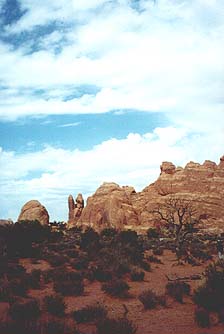
A view of the landscape looking toward Private Arch.
These are fins seen from the side. The left edge has some columns of rock
split off from the end of the fin.
Below, two views of Sand Dune Arch. Up close, the ground is littered with the huge rocks that fell out of the center.
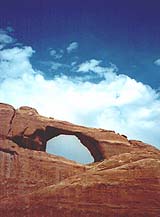

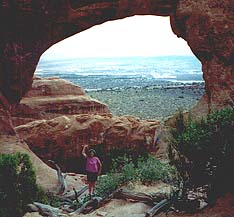
Alison framed by Wall Arch, in the northernmost
"Devil's Garden" area.
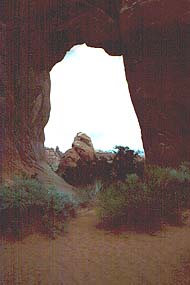
Pine Tree Arch in the "Devil's Garden" area.
John is sitting on some rocks along the left side of the arch, though
he is dwarfed by its dimensions.
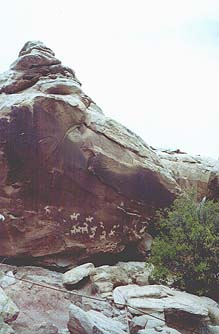
Petroglyphs, or pictures scratched into the rock,
located near Delicate Arch. These are relatively recent, dating only
back to the 19th century ... note that the people are riding horses.
The petroglyphs at Capitol Reef are 'way older, many centuries before
the Spanish brought the horse to the Americas.
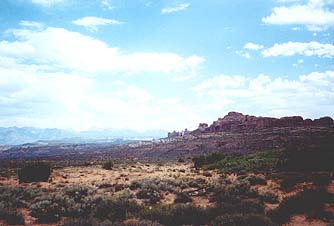
Landscape, looking toward the "Fiery Furnace" formation.
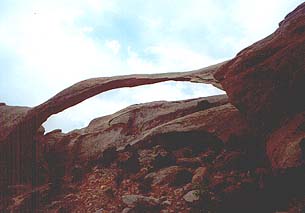
Landscape Arch is in the "Devil's Garden" area. It
is the most finely sculpted arch here, with only a thin layer of lintel
rock arching above. The Park Service has closed the area immediately
under the arch, fearing imminent collapse.
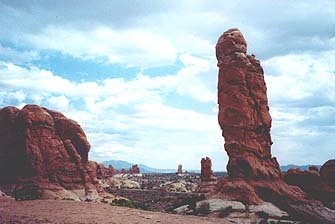
Some rock pillars looking toward the "Windows Section"
in the park. These may be sections split off from a fin, or may be the
remains of a fallen arch.